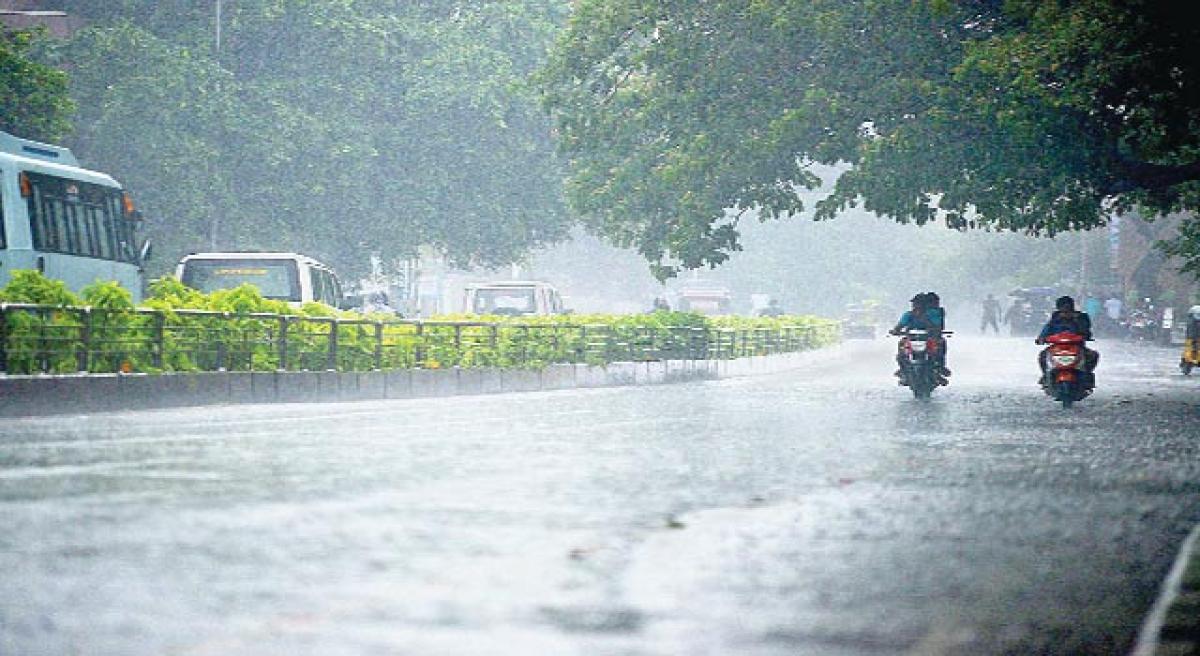Live
- Karuna Gopal Vartakavi Appointed as Advisor for IIT Kanpur's Center of Excellence in AI for Sustainable Cities
- Internet subscribers touch 936 mn in India
- Under-construction bridge collapses in Peddapalli
- Hyd Lok Sabha: disappointed, rights activists kick-start NOTA campaign
- Wow! Kapra Revival team opts for wastewater treatment technique
- After ‘Mangalsutra’…Modi slams Congress on Hanuman Chalisa
- Farmers’ loan waiver by August 15: Revanth
- MyVoice: Views of our readers 24th April 2024
- Nasa to overhaul mission MSR – here’s why it must
- ‘Military strength, capabilities necessary to prevent wars’
Just In

India’s crucial monsoon rains are expected to be of an average amount in 2017, the weather office said on Tuesday, easing concerns over farm and economic growth in the world’s leading producer of an array of agricultural goods.
India’s crucial monsoon rains are expected to be of an average amount in 2017, the weather office said on Tuesday, easing concerns over farm and economic growth in the world’s leading producer of an array of agricultural goods.
The monsoon is the lifeblood for India's farm-dependent $2 trillion economy and nearly two thirds of India's 1.3 billion people depend on agriculture for a living.
Monsoon rains this year are expected to be 96 percent of the long-term average, K J Ramesh, Director General of the State-run India Meteorological Department, told a news conference.
India’s weather office defines average, or normal, rainfall as between 96 percent and 104 percent of a 50-year average of 89 cm for the entire four-month season beginning June.
The monsoon delivers about 70 percent of India's annual rainfall, critical for growing crops such as rice, sugar cane, corn, cotton and soybeans because nearly half of the country’s farmland lacks irrigation.
“We expect normal climatological distribution of rains and we also expect the trend of higher agricultural production and economic growth to continue,” Ramesh said. Monsoon rains would arrive on the southern tip of Kerala State by around June 1 and retreat from the western State of Rajasthan by September, the department said.
India would have good distribution of rainfall this year, Ramesh said. Plentiful rains can spur farm and economic growth and boost rural spending on gold, cars, motorcycles and refrigerators.
“The monsoon forecast is reassuring given all southern states in India are seeing a water crisis. A good, well-distributed monsoon will keep food inflation risk on the lower side and give RBI the elbow room to ignite growth by keeping liquidity accommodative,” said Rupa Rrege Nitsure, Group Chief Economist at L&T Finance Holdings.
India could emerge unscathed from the El Nino weather pattern as it is expected to set in only during the latter part of the four-month monsoon season, Ramesh told Reuters last month.
A US government weather forecaster earlier this month said La Nina conditions had disappeared and projected the possibility of El Niño developing later this year.
Forecasters in Japan and Australia also see a 40-50 percent chance of the El Nino weather pattern developing later this year. El Niño, a warming of ocean surface temperatures in the eastern and central Pacific that typically occurs every few years, faded in 2016 and was linked to crop damage, fires and flash floods.
Last year, despite forecasts of La Nina leading to heavy bursts of rains, India only received average monsoon rainfall, not surplus as previously expected. Typically less damaging than El Niño, La Niña is characterised by unusually cold ocean temperatures in the equatorial Pacific Ocean and tends to occur unpredictably every two to seven years. Severe occurrences have been linked to floods and droughts.
India received average rains in 2016, after suffering two successive years of drought for only the fourth time in over a century, driving farmers to penury and some of them to suicide.
Despite last year's average rains, farmers in Karnataka and Tamil Nadu, Telangana and other States in southern India and some parts of the western State of Maharashtra are still struggling with dry conditions due to patchy rains there.
By Sudarshan Varadhan & Mayank Bhardwaj

© 2024 Hyderabad Media House Limited/The Hans India. All rights reserved. Powered by hocalwire.com







